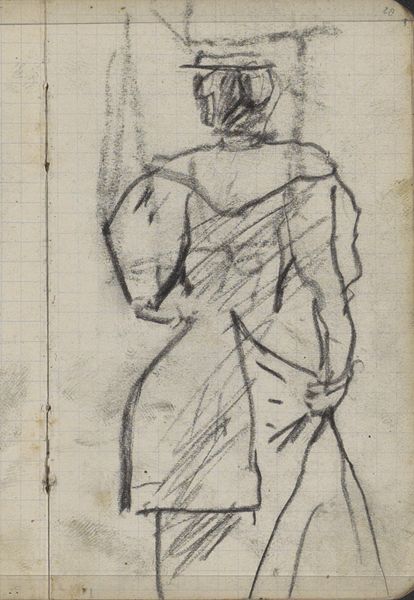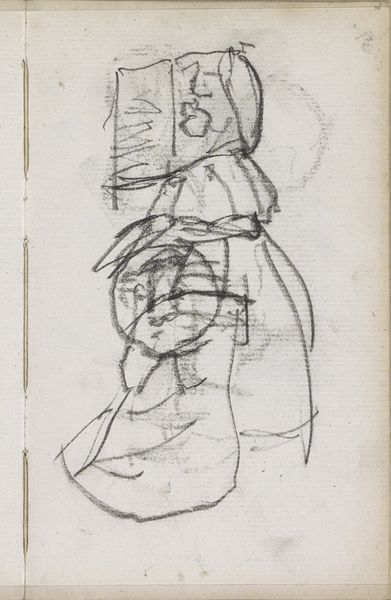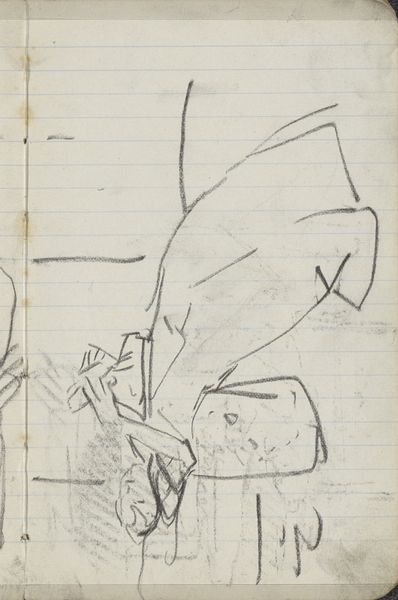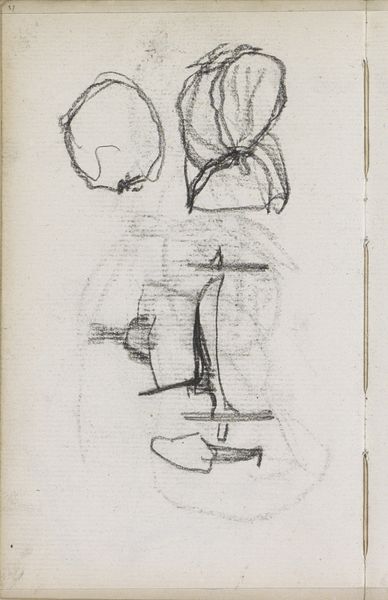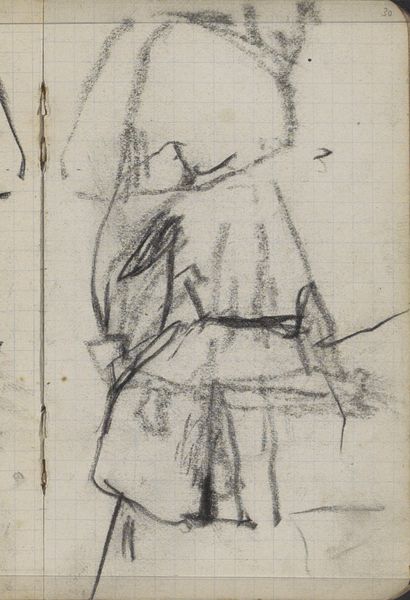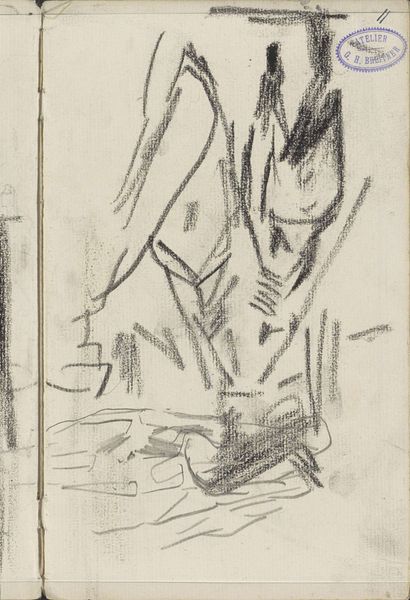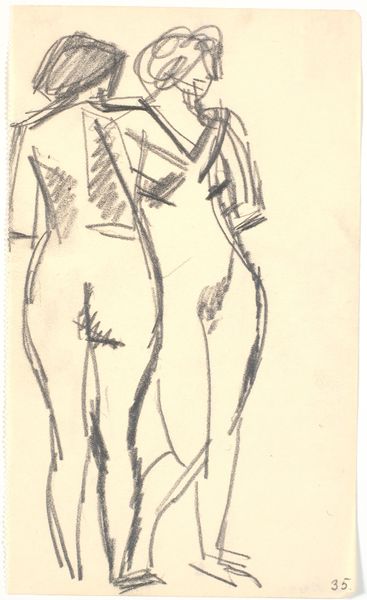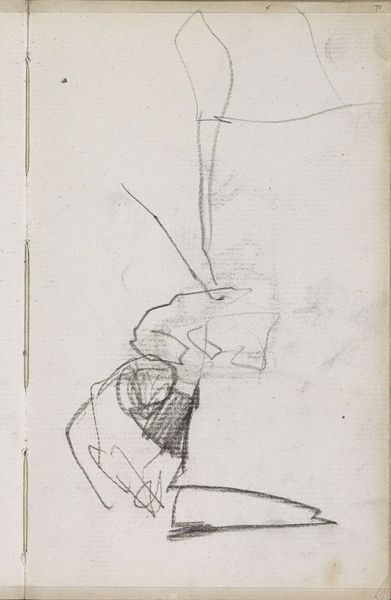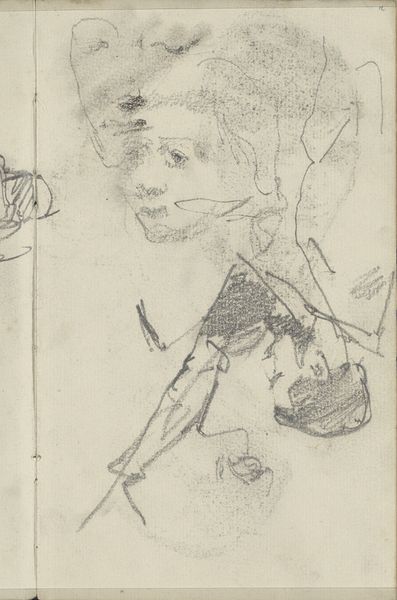
drawing, pencil
#
portrait
#
drawing
#
amateur sketch
#
toned paper
#
light pencil work
#
sketch book
#
incomplete sketchy
#
figuration
#
personal sketchbook
#
character sketch
#
pencil
#
sketchbook drawing
#
watercolour illustration
#
sketchbook art
#
realism
Copyright: Rijks Museum: Open Domain
Curator: Here we have George Hendrik Breitner's 1893 pencil drawing, "Dienstmeid, op de rug gezien," or "Maidservant, Seen From the Back." It resides in the Rijksmuseum. Editor: It's incredibly intimate; the lines are sparse and gestural, and it really conveys a sense of the subject's private world. There's a vulnerability here, I think. Curator: Breitner was fascinated by everyday life, particularly that of working-class women in Amsterdam. We can see the immediacy in his use of a simple pencil sketch. He made many of these informal drawings in his sketchbooks, focusing on the details of posture and clothing to reflect a certain type of labor and production. Editor: Absolutely, and it speaks volumes about class and gender dynamics of the period. This wasn't simply about capturing a likeness; it's about a system. The downcast gaze and hidden face signify a societal structure that relegates women in domestic service to invisibility. We aren't meant to see *her,* just the work she performs. Curator: Indeed. Breitner's approach to his materials—pencil on paper, with the sketch lines exposed—underscores the value of raw process over idealized form. This brings visibility to artistic labor itself, reflecting how modern production increasingly defined experience. Editor: But it also opens a dialogue about the power dynamics inherent in the act of looking, doesn't it? Breitner, a male artist, observing and sketching a female servant – there’s a certain gaze, an assertion of control implicit within this intimate observation that warrants acknowledging. It also opens space for the reinterpretation by different gaze. Curator: I agree that there are complicated, even uneasy dynamics at play when considering class and perspective here. The accessibility and low cost of these sketches enabled an efficient study of working bodies as new objects of study and the potential to consume these depictions widely. Editor: Well, that reading does leave one contemplating the very nature of representation and its entanglement with social stratification, doesn't it? Thanks for helping me consider how everyday labour in seen with a nuanced approach through class, race and gender. Curator: Likewise. The way this work draws us into the lived reality of an overlooked figure of the time makes this modest drawing exceptionally rich, doesn’t it?
Comments
No comments
Be the first to comment and join the conversation on the ultimate creative platform.



